Abdominal pain is one of the most common health conditions; we all experience it from time to time. There are many different reasons for pain in this area, so it is crucial to correctly identify the problem in order to treat it in the best possible way.
We want to share the Tummy Map with you to help you figure out what your stomach hurts.
The Right Upper Abdomen

This part of the abdomen contains the gallbladder and liver, so the most common causes of pain in this area are usually related to these organs.
If you experience sudden, severe pain radiating to your right shoulder and appear after eating a heavy, greasy meal, you probably have gallstones.
Sharp pain or cramping that spreads to the right shoulder or back and lasts for several hours may indicate cholecystitis or inflammation of the gallbladder.
A dull or sharp pain that can come and go often indicates that you have hepatitis, an inflammatory liver disease.
The Middle Upper Abdomen
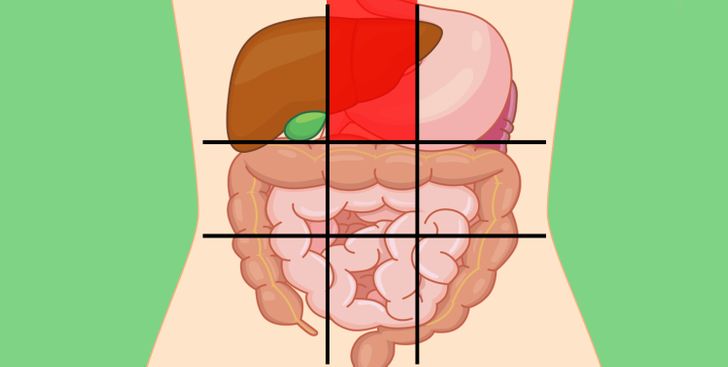
This part of the abdomen includes the duodenum, the first section of the small intestine, and a large part of the pancreas.
If you often experience pain that radiates to your back and is aggravated by eating, especially high-fat foods, this could be a sign of pancreatitis.
Severe pain and tenderness in this area accompanied by nausea, vomiting, diarrhea, and abdominal bloating may be due to an epigastric hernia.
A burning sensation in the chest along with symptoms such as cough, sore throat, bitter taste in the mouth, excessive gas, nausea, vomiting, and bloating usually indicate heartburn or dyspepsia.
If you suffer from heartburn that is worse when you bend over or lie down with chest pain and belching, you probably have a hiatal hernia.
Pain that may be worse between meals or in the middle of the night and that can be relieved by eating can be a symptom of duodenal ulcers.
The Left Upper Abdomen
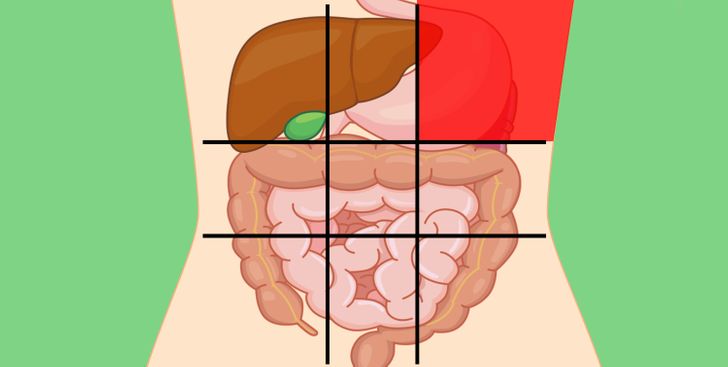
Most of the stomach is concentrated in the upper left part of the abdomen, so any unusual sensation in that area usually indicates problems with that organ.
Severe and persistent pain, accompanied by nausea or vomiting, can be a sign of gastritis or inflammation of the stomach.
Burning pain, which is usually more intense when the stomach is empty, can be caused by stomach ulcers.
The Right And Left Abdomen
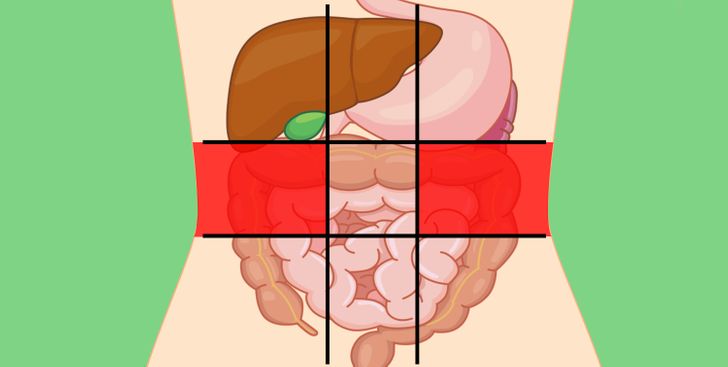
The kidneys are located in the right and left parts of the abdomen, on each side of the spine. Sometimes pain in these areas can also be caused by problems in the large intestine.
Side pain that radiates to your back and is accompanied by fever, chills, diarrhea, and nausea can be a sign of a kidney infection.
Severe pain that radiates to the lower abdomen and comes in waves indicates kidney stones. You may also experience nausea, vomiting, fever, a persistent urge to urinate, and blood in your urine.
Pain with or without swelling that appears along with hard, dry stools that are difficult to remove can be a symptom of constipation.
The Middle Abdomen
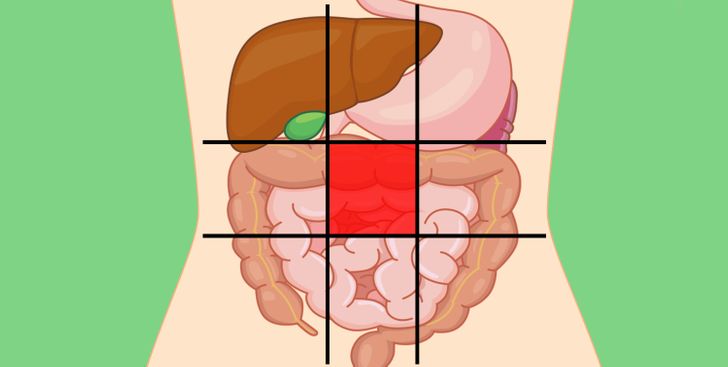
Any uncomfortable sensation in this part of the abdomen is closely related to problems in the small and large intestine.
Abdominal pain and cramps accompanied by severe diarrhea, fatigue, fever, and weight loss indicate inflammatory bowel disease.
If you experience pain along with vomiting, diarrhea, and the inability to pass gas or stool, it can be an early sign of small bowel obstruction.
Painful swelling or lump near the belly button, which often causes abdominal discomfort, is called an umbilical hernia.
The Left Abdomen
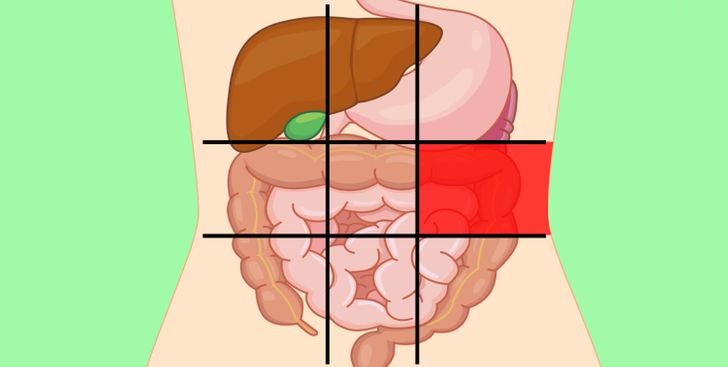
In addition to the left kidney, this area also contains the descending colon, which can become infected or inflamed due to an unhealthy diet, aging, and some other common causes.
Constant and persistent pain along with abdominal pain, fever, nausea, and vomiting are the most typical symptoms of diverticulitis or inflammation of the descending colon.
Have you ever suffered from stomach pain? Have you had a medical exam? Share your experience with us in the comments!


